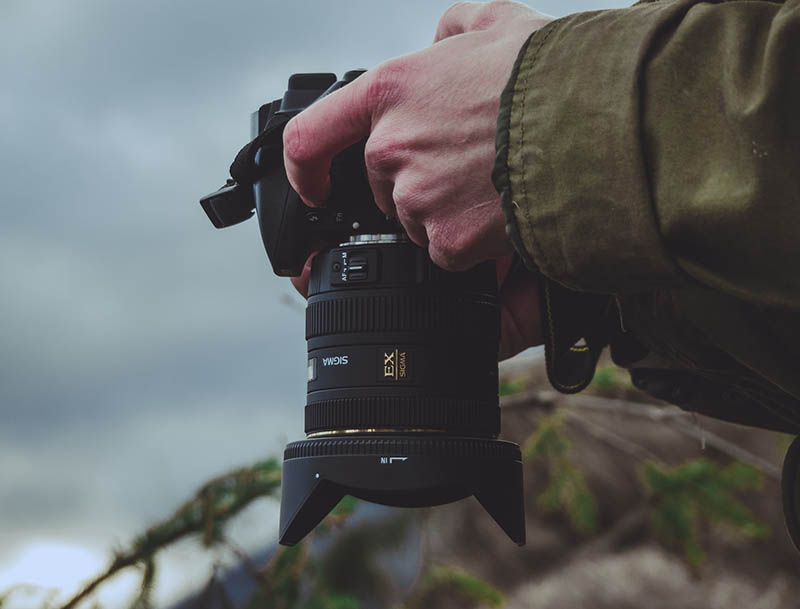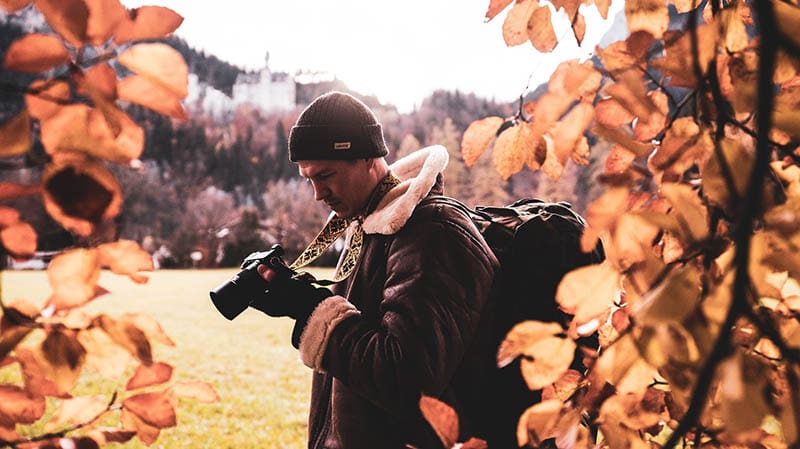What is Chimping? Photography Basics Explained
Last Updated on

You may know the basic exposure triangle terms for photography, such as ISO, aperture, and shutter speed, or you may have come across more advanced terms such as coma aberration or cross-polarization. However, you may not know the origin of a term called “chimping” which isn’t a standard word we hear every day. Below, we’ll explain what it means and how it originated.

What Is Chimping?
The word “chimping” is a slang term used in photography to describe the common habit of people looking down at every photo they take after the exposure has been taken. It describes what many tourists or point-and-shoot photographers exhibit as they make “chimpanzee sounds” when they look down at a photo they adore. In short, it’s sort of a gag to make fun of how people inspect their images after the fact. However, it can be seen as a derogatory phrase.
Chimping became popular in the late 1990s and early 2000s. According to one source, a staff photojournalist named Robert Deutsch used this expression in an article he wrote, increasing its popularity and usage.
Where Is It Used?
Although it isn’t a common expression, chimping is used mostly in the U.S where it has its origins. It’s used more often by photographers that take handheld photos since they do not have a tripod to keep their camera in a firm position.

Advantages of Chimping
Chimping can be a good thing in the right circumstances. If you look down at your camera screen to review a photo, you can analyze and see if it came out successfully or not. In this case, you may check an image’s focus, histogram, and sharpness. This is particularly useful if you’re in an area with no environmental changes, such as a studio or other indoor locations. There is also a possibility that you dislike the composition and want to make adjustments for a more interesting shot.
Disadvantages of Chimping
When it comes down to it, there are perfectly good reasons to check your photos while on the move.
However, if you tend to “chimp” or view your images constantly after each shutter, you may miss important moments that could be spent pursuing new pictures. For example, it can be detrimental if you’re shooting wildlife since every new angle or moment the animal is moving can make for even better photos. The same could be said for events such as weddings or concert performances. You may miss out on the perfect shot!
Additionally, when you preview your photos on the LCD screen, you’re using precious battery life that may be needed later. Especially if you’re shooting outside and need to push the screen to maximum brightness, chimping will suck the juice out quickly.

Dangers of Chimping
Generally, there are more downsides than upsides to chimping. In fact, there are times when it can pose a real hazard to your safety. If you’re a street photographer with hundreds of people walking past you, including runners, bikers, or other pedestrians, you could get seriously injured or injure others if you aren’t aware of your surroundings. It’s essential to keep your head up so you know what you can expect.
Another problem with chimping is when you’re in inclement weather. If you’re a storm chaser trying to get an epic shot of tornados, lightning, or monsoons, chimping isn’t worth it. With high-speed winds and fast changes in the environment, you could be wasting time that could be spent taking cover or escaping the harsh climate.
Frequently Asked Questions
What Do You Call a Non-Professional Photographer?
Photographers who aren’t in the professional photography industry are usually referred to as enthusiasts or amateurs. However, both terms don’t necessarily mean that the photographer in question is bad, but rather that they do not make money and instead practice it as a leisurely activity.
What Do You Call an Avid Photographer?
An avid photographer who is excited about their passion may be called a “shutterbug.” This basically means they are enthusiastic about taking photos!
•You might also like: What Does Covid Look Like Under a Microscope? (With Pictures)

Final Thoughts
Chimping is not a common expression in the photography world, but when it is used, some argue that it is a derogatory term that puts photographers to shame. It’s better to stay focused on your own images to improve your photography skills, but if you find yourself chimping in situations where you could get a once-in-a-lifetime shot, it could be worth considering changing your habits. In any case, we hope this clears up any confusion about its meaning.
Featured Image Credit: Tadeusz Lakota, Unsplash
About the Author Robert Sparks
Robert’s obsession with all things optical started early in life, when his optician father would bring home prototypes for Robert to play with. Nowadays, Robert is dedicated to helping others find the right optics for their needs. His hobbies include astronomy, astrophysics, and model building. Originally from Newark, NJ, he resides in Santa Fe, New Mexico, where the nighttime skies are filled with glittering stars.
Related Articles:
What Is the Best Binocular Magnification for Hunting? Optical Features Explained
How to Clean a Refractor Telescope: Step-by-Step Guide
How to Clean a Telescope Eyepiece: Step-by-Step Guide
How to Clean a Rifle Scope: 8 Expert Tips
Monocular vs Telescope: Differences Explained (With Pictures)
What Is a Monocular Used For? 8 Common Functions
How to Clean a Telescope Mirror: 8 Expert Tips
Brightfield vs Phase Contrast Microscopy: The Differences Explained
